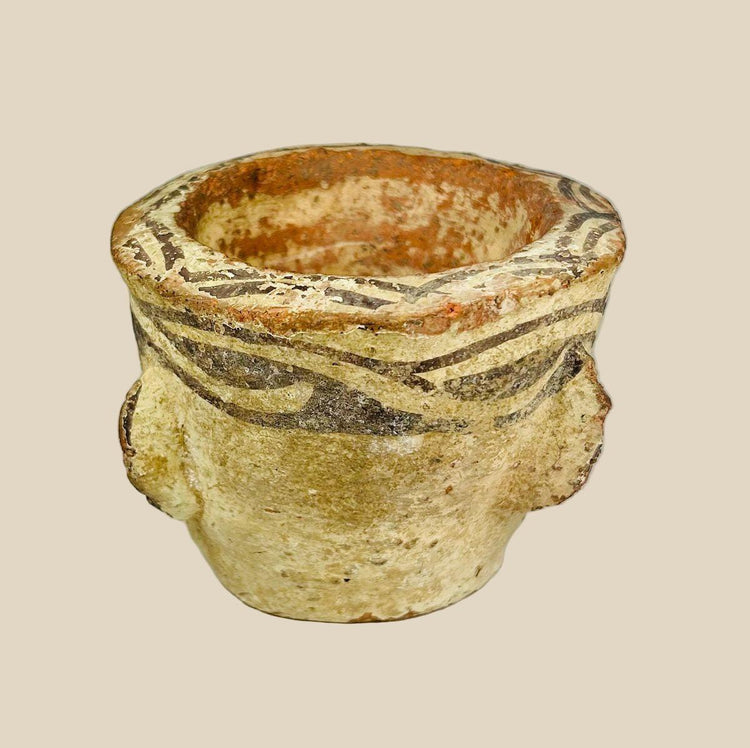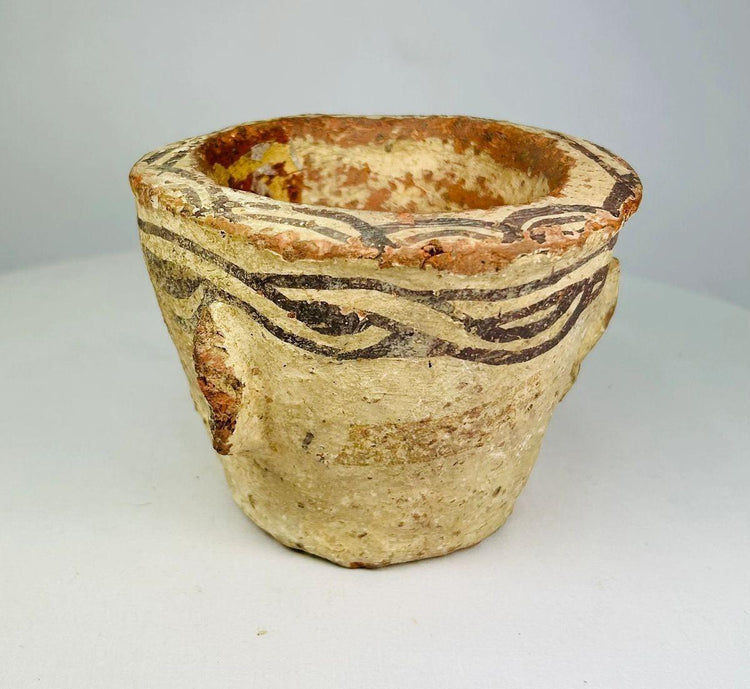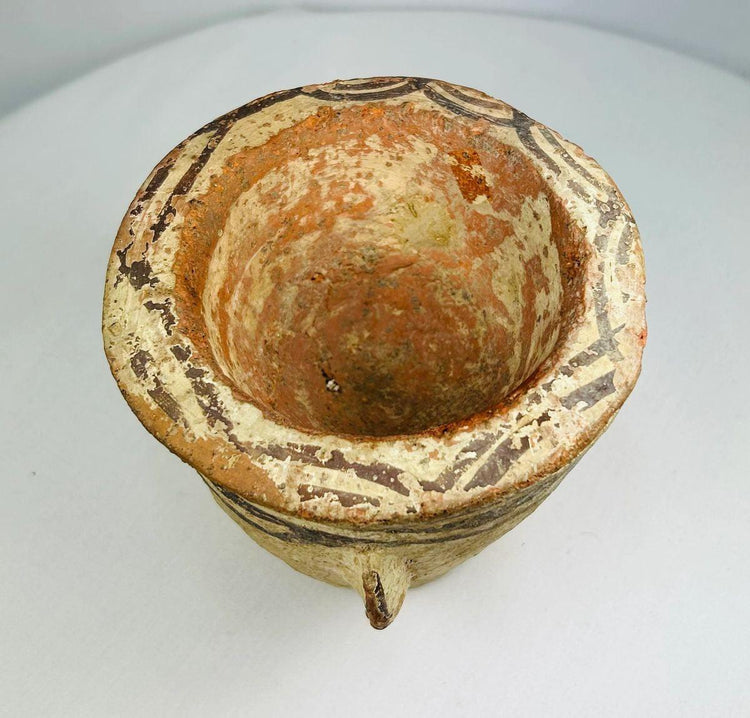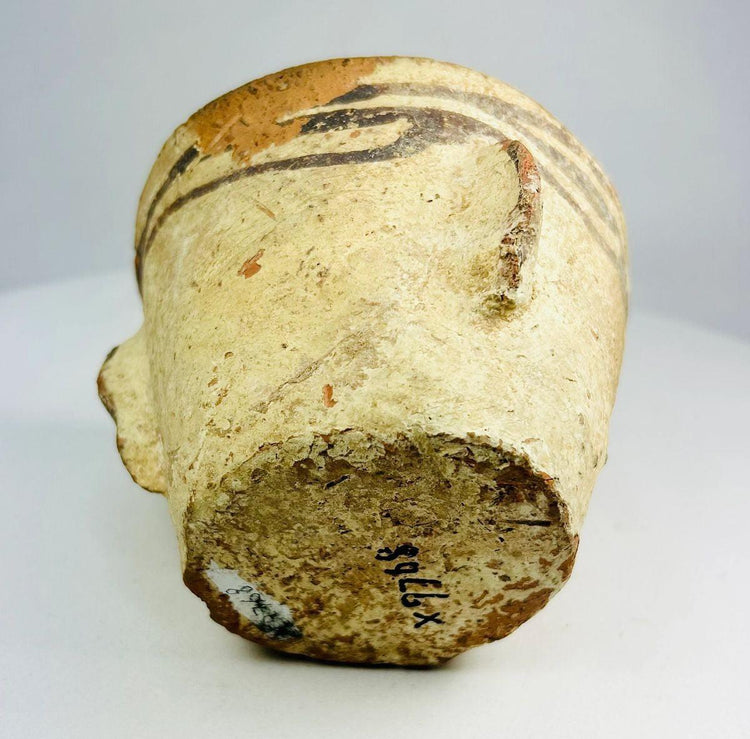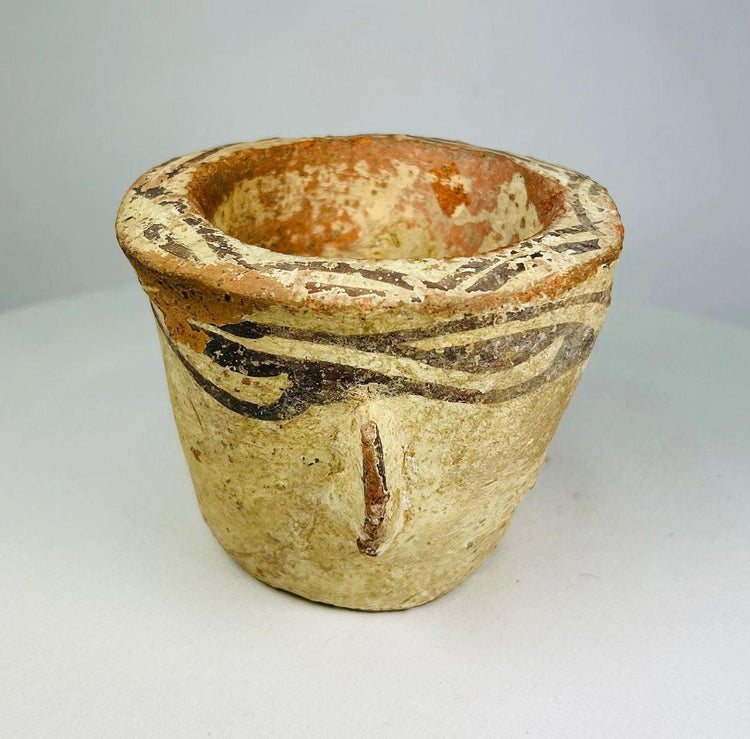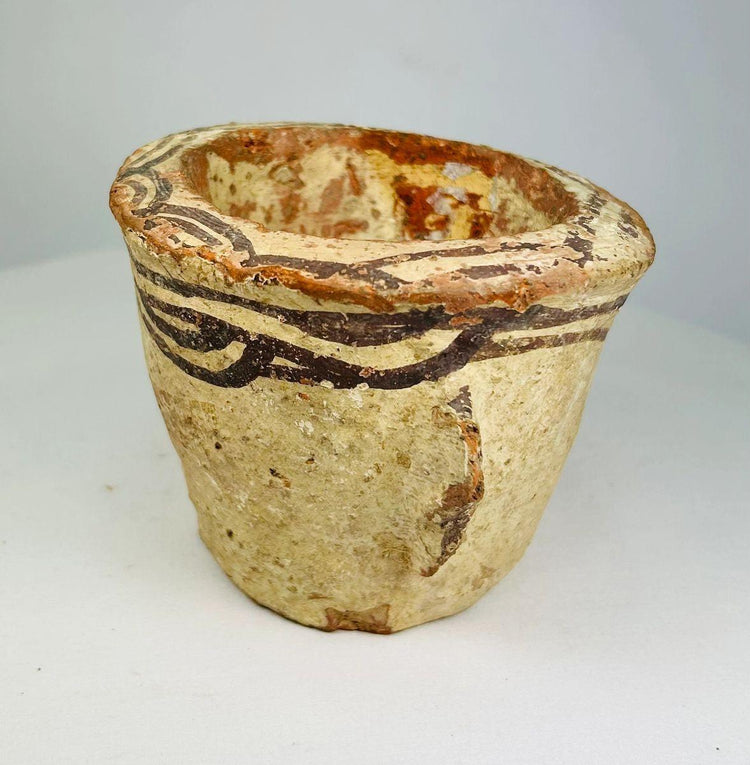Islamic Era | Afghan | Decorated Pottery Mortar | Circa 12th Century AD
Description
More
Less
Historical Context & Origin
Region: Afghanistan
Material: Terracotta with slip decoration
Period: 12th Century CE (Islamic Golden Age)
Description
This rare terracotta mortar exemplifies the balance of functionality and artistry in the medieval Islamic world. Crafted in Afghanistan during the 12th century, it was designed for grinding spices, grains, and medicinal ingredients—essential tools in both cuisine and health practices. Its compact yet refined form reflects the high level of ceramic skill prevalent in the Islamic Golden Age. Decorative black slip motifs encircle the rim, transforming a utilitarian object into an artifact of beauty and cultural depth.
Features
- Terracotta body with black slip decoration around the rim
- Side protrusions for improved handling
- Natural wear from centuries of use on the interior
- Warm earthy patina enhancing historical character
Cultural Significance
Mortars were integral to daily life in medieval Islamic societies, bridging the worlds of food preparation, medicine, and ritual. Beyond their practical use, many were adorned with decorative elements, embodying the Islamic ideal of imbuing even common objects with elegance and spirituality. This piece reflects Afghanistan’s central role in medieval trade and culture, where art and practicality seamlessly converged.
Condition
Good antique condition with surface wear consistent with age. The interior shows natural abrasion from centuries of grinding, while the exterior retains decorative slip traces and an aged patina. No modern restoration detected.
Dimensions (approximate)
Height: 3.75 in
Diameter: 4.5 in
Age
Approximately 800–900 years old
Description
Historical Context & Origin
Region: Afghanistan
Material: Terracotta with slip decoration
Period: 12th Century CE (Islamic Golden Age)
Description
This rare terracotta mortar exemplifies the balance of functionality and artistry in the medieval Islamic world. Crafted in Afghanistan during the 12th century, it was designed for grinding spices, grains, and medicinal ingredients—essential tools in both cuisine and health practices. Its compact yet refined form reflects the high level of ceramic skill prevalent in the Islamic Golden Age. Decorative black slip motifs encircle the rim, transforming a utilitarian object into an artifact of beauty and cultural depth.
Features
- Terracotta body with black slip decoration around the rim
- Side protrusions for improved handling
- Natural wear from centuries of use on the interior
- Warm earthy patina enhancing historical character
Cultural Significance
Mortars were integral to daily life in medieval Islamic societies, bridging the worlds of food preparation, medicine, and ritual. Beyond their practical use, many were adorned with decorative elements, embodying the Islamic ideal of imbuing even common objects with elegance and spirituality. This piece reflects Afghanistan’s central role in medieval trade and culture, where art and practicality seamlessly converged.
Condition
Good antique condition with surface wear consistent with age. The interior shows natural abrasion from centuries of grinding, while the exterior retains decorative slip traces and an aged patina. No modern restoration detected.
Dimensions (approximate)
Height: 3.75 in
Diameter: 4.5 in
Age
Approximately 800–900 years old
You May Also Like


















